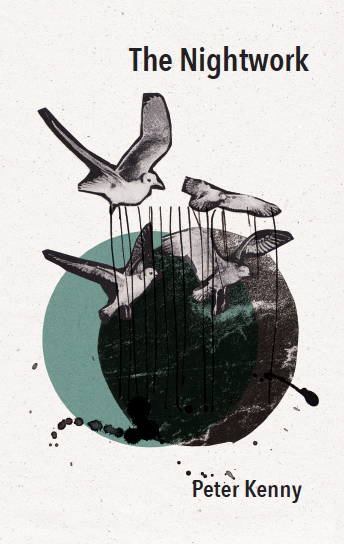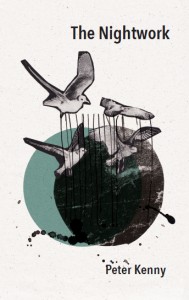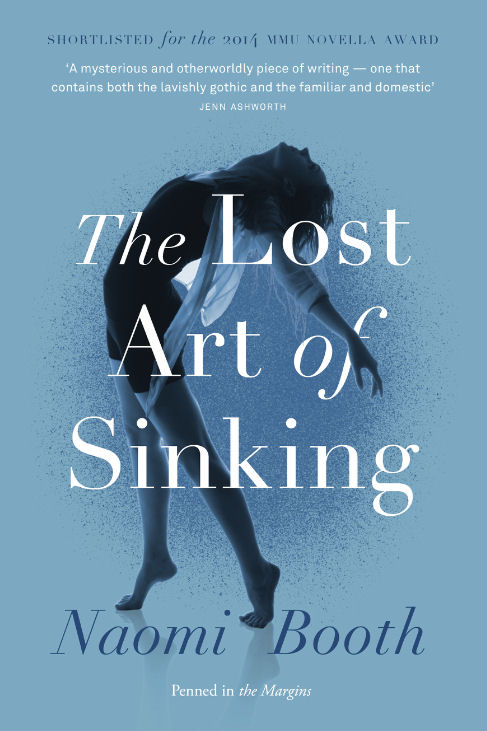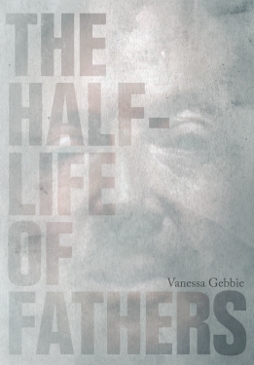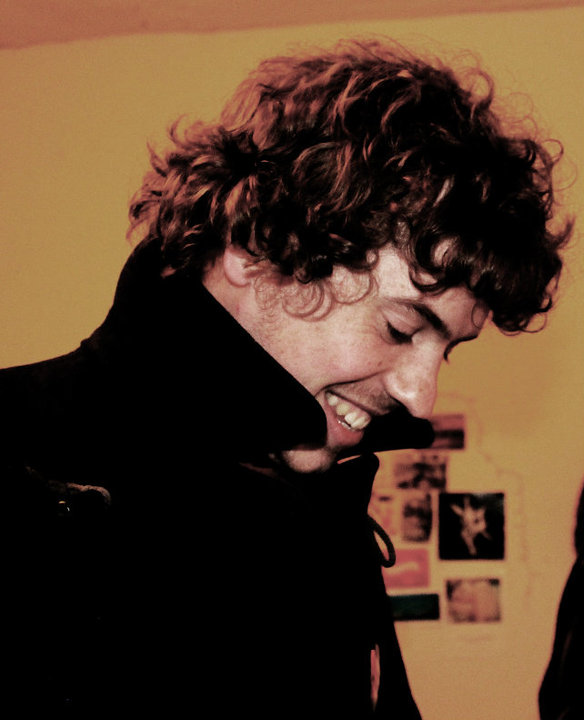The Nightwork by Peter Kenny
-Reviewed by Bethany W. Pope–
Mythology always provides a rich seam for writers to draw from, especially when they uncover mythic resonances in their everyday lives. When the myths rise up through the skin of the world, the everyday minutiae of life is revealed as what it is: powerful and interesting. When forging the useable, wearable amalgam of rarefied myth and the dull nickel of everyday, the question that writers should always ask themselves is, ‘How far into the depths do I want to go to find the pure ore?’ Peter Kenny’s pamphlet, The Nightwork, occasionally descends deep enough to bring back a chunk of true gold, but far more frequently the poet stops digging when he hits a lode of serviceable cliché. As a result the collection is very readable, enjoyable, but rarely profound.
The first poem in the pamphlet, ‘A sparrow at 30,000 ft.’ opens with the lines:
Cattle class, in clear air turbulence,
this shuddering is perfectly normal.
Through the window of this bucking jumbo,
I see the horizon thicken into indigo.
When I teach poetry, one of the loose rules I give my students is that they should never use a phrase in a poem if they’ve heard it on the news. This is flexible, of course. What sounds cliché in one dialect often breathes anew in another, but generally clichés are shorthand. They say something that can be easily understood without anyone thinking too hard about it. ‘Cattle class’ meets that description quite nicely. It’s relieved, a bit, by the poet transforming the plane into a bull (bulls are a bit of a reoccurring image in this book – the poet has a knack for selecting motifs and themes) but while poems may be brief, they should be made to say as much as possible. Thinking, shifting perspective away from the expected, makes the world new.
A poem can be very polished, check every box, but if it doesn’t make the reader look up and see the world a little differently, it doesn’t work.
Thankfully, some lines do provide that rare, world-shifting illumination. These lines continue from the same poem, ‘Life, I recall, is a sparrow / that darts through the fire-lit mead-hall.’ It’s an old image, gathered from an old mythology, but said in this new way, in this fresh context, it gleams.
The poem, ‘Minotaur’, treats the subjects of myth, and life, in the way both deserve. ‘Forehead gored’, a migraine-sufferer is trapped someplace lovely. In pain, and frustrated, he re-makes the world into an image of his own inner turmoil:
Rose-choked, the garden walls break
over the cracked slabs. I tread petals,
I make divine slime of rose heads
the ecru of ex-white petal falls.
In the end, ashamed at his wreckage, the speaker says:
I read my leisurely books
near the ornamental fish pond,
the copper-coloured fishpond,the one I can never look in.
Those last lines encapsulate this book in microcosm. A myth is made new in subtle, interesting ways: in myths and fairy-stories, copper mirrors tell the truth – monsters who’d like to remain ignorant of their true faces should probably avoid them. Poets should look. Too often in this pamphlet, Kenny doesn’t, or he takes glimpses only. It’s a shame, in a book with such potential though, thankfully, this pamphlet is not fatally flawed.

